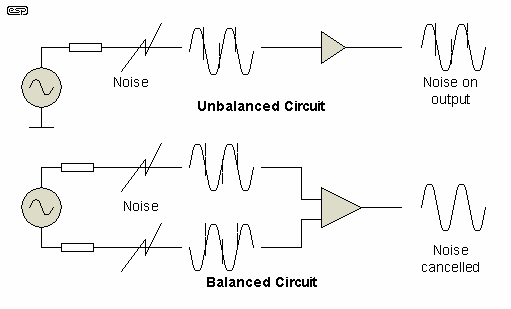if balanced xlr requires 2 xlr cables, left and right OUT from a dac into an amplifier, left and right IN, how are you then able to get a cable like this (only xlr on one end) and still get left and right channel? wouldn’t you need something like this (2 xlr ends)?
trying to learn more about wiring
thanks
That cable is a 4 pole balanced connecter, so it combines left and right into one cable. A traditional 3 pole xlr carries only one channel (when balanced for most applications)
You can use the dual 3 pole balanced connectors, but there really isn’t a significant difference to do so and also mostly only higher end amps have separate right and left balanced outs
oh, makes sm sense now lol
thanks
so if it was all 3 pole then you went from 2, 3 pole xlr to one 3 pole xlr, it would just be one channel right? but no one would do that for headphones
Yes, it would either be discarding the signal or you would have something to sum the channels to mono.
You can run 2 unbalanced (left and right) signals through a single xlr cable but you would have to rewire electronics and this is fairly rare
Unbalanced vs balanced signal:

This is how things are commonly wired:
Note that “L” and “R” are arbitrary, could also refer to them as channel 1 and channel 2.
The ! indicates the inverse of the signal.
| Connector | Signal L | Signal R | Signal !L | Signal !R | GND |
|---|---|---|---|---|---|
| 2 pole jack “mono” |  |
 |
|||
| 3 pole jack “stereo” |  |
 |
 |
||
| 3-pin XLR |  |
 |
 |
||
| 4-pin XLR |  |
 |
 |
 |
|
| 5-pin XLR | DMX SIGNAL! | DO NOT | PLUG IN | TO AUDIO | GEAR! |
As another note: 3 pin jack can also be used for balanced signal (common on mixers and audio interfaces. Then the pinout is T = Hot (Signal L), R = Cold (Signal !L), S = GND
this is super helpful
thanks for this
Lol are you even able to get a dmx cable to fit into most audio equipment?
There are 5-pin to 3-pin XLR adapters. Better tell people to not plug something together just because the connectors fit.
I didn’t think of that lol, I was just imagining someone trying to cram a 5 pin into a 3 pin
I add a question to the thread of something I don’t understand:
Are all the cables with TRS connectors balanced?
How do I distinguish a balanced from an unbalanced cable if not.
Thanks!
TRS means Tip, Ring, Sleeve. Tip is left channel, Ring is right channel and sleeve is ground, it’s an unbalanced connector. The balanced version is TRRS where the second ring and the sleeve carry the inverse signal of left and right channels respectively.
Note: There are also TRRS jacks for headphones with microphones, in which case the ring is the ground and the sleeve is the microphone (or the reverse with some phone manufacturers).
What type of cables are you referring to? Typically a balanced 2.5mm is trrs
You can use a 1/4 inch trs cable as balanced for one channel, commonly found for pro gear
OK I get it.
My confusion was that I thought the TRRS type connector was exclusive for stereo and microphone.
Thanks for the information!
So I have a question. I understand that the DAP or DAC or amplifier produce and send a balanced signal through the trrs cable. But… Where is that signal compared and the noise eliminated? The wire itself? Because the plug to the cans is basically mono. The source itself?. I don’t get it…
Thanks
my guess is the wire itself, because as mentioned before you can convert a balanced jack to unbalanced, making it useless. so the cable matters in this instance.
Edit: Incorrecto
Thanks…
But… if it happens in the amp. Why the 4 pole cable?
Edit: Incorrecto
But isn’t the cable L+,L-,R+,R-? Where is the ground?